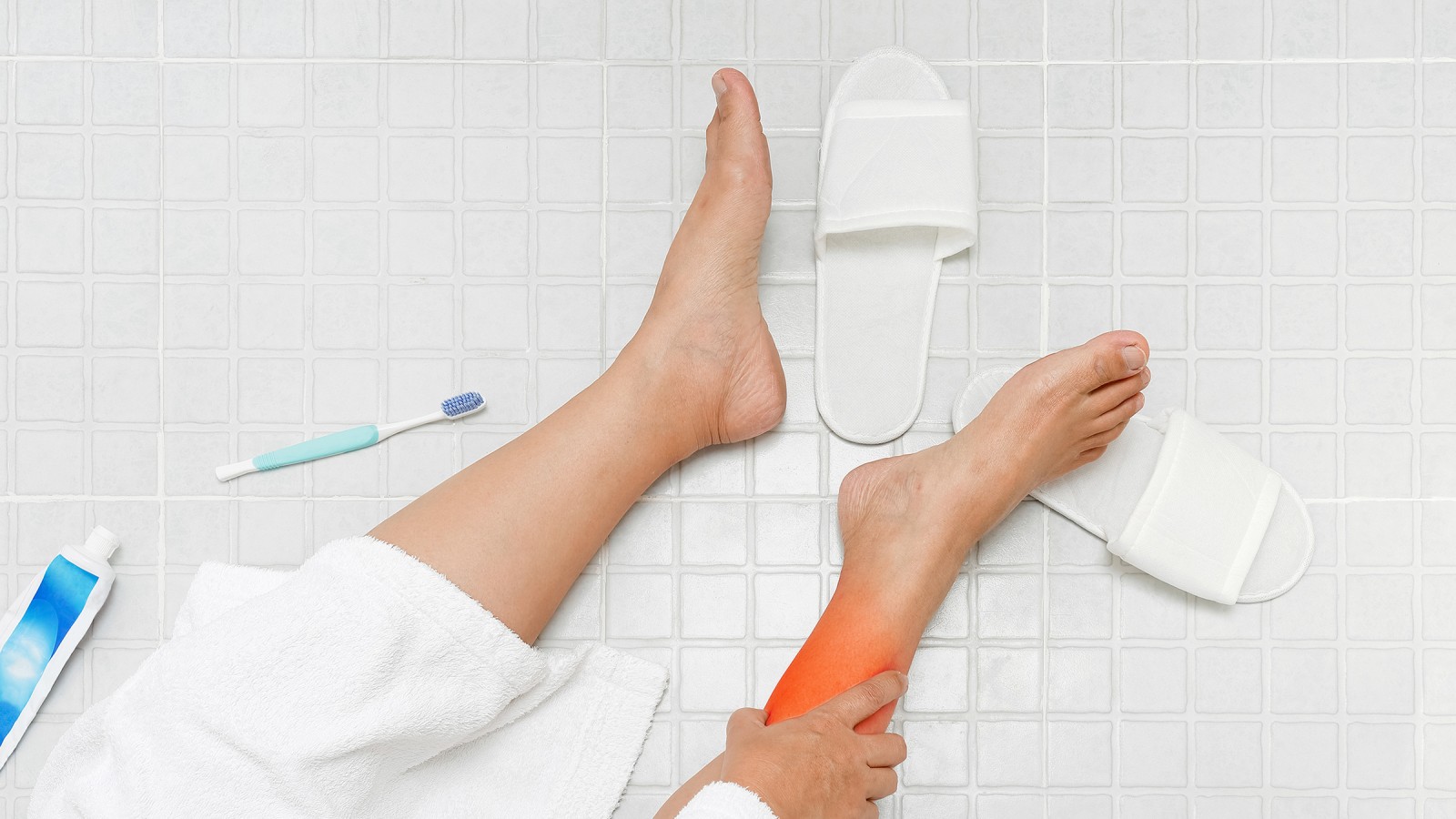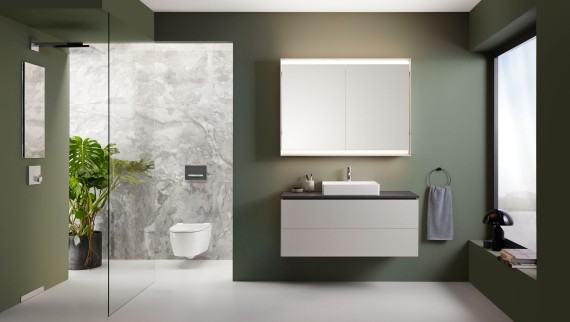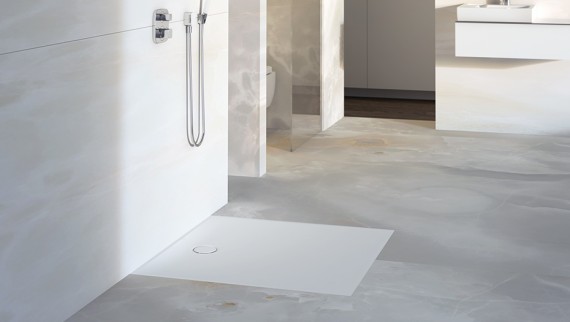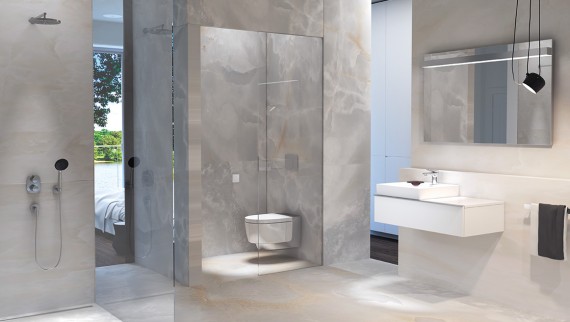A painful fall
Stefan has come home from a gruelling day at work. Reason enough to go out for a run. Exhausted but full of endorphins, he gets under the shower after completing his round of sport.
Danger! Slippery surface
Now, all he has to do is brush his teeth before spending a cosy evening in front of the television. But oops – before he knows it, he slips on the wet tiled floor and falls over. Things could have been much worse for Stefan. His fall only resulted in a few bruises. An extremely painful experience, which could have had far worse consequences, as studies in Germany, Austria and Switzerland show. According to these studies, falls at home rank at the very top of the accident statistics.

Minimising the risk
The risk of slipping and falling over on wet surfaces is relatively large in showers in particular. However, this hazard can be reduced with the right selection of materials and some helpful bathroom accessory:
- When you’re building a new home or renovating your bathroom, it’s worth giving some thought to the selection of materials. Non-slip tiles or shower surfaces made of solid surface materials such as Setaplano particularly help to avoid the risk of slipping.
- Anti-slip treatment can also make slippery surfaces safer by increasing the surface roughness and improving the anti-slip properties. This should always be done by an expert.
- Although antislip mats or strips will definitely never win any design awards, they do at least provide the necessary support. Thanks to their nubs, antislip mats stick firmly to the surface but are still easy to remove. They can be cleaned and dried easily, although they are not hygienic.
- To avoid losing your balance when you get out of the shower with wet feet on the slippery tiled floor, place a bathroom mat or towel on the floor in front of the shower and dry your feet on it.
Incidentally, the same thing also applies to getting out of the bathtub.
Products for a barrier-free bathroom

Geberit ONE
The best of two worlds becomes one. Functional design for a better quality of life.

